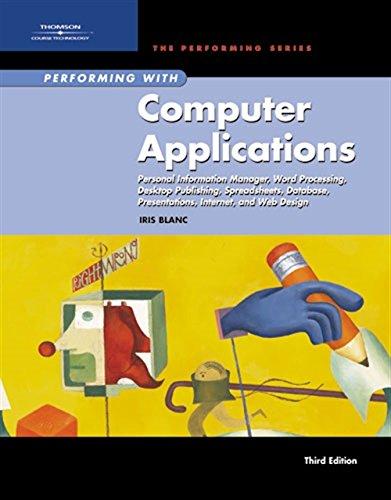Question
Code below show the calculation of fuel economy of conventional car, you are required to modifiy the code of MATLAB below by adding hydraulic system
Code below show the calculation of fuel economy of conventional car, you are required to modifiy the code of MATLAB below by adding hydraulic system (hydraulic hybrid system) into the conventional car to calculate its fuel economy. Given the sizing of components of hydraulic: Accumulator; Pcharge=10MPa, Pmax= 40MPa, Pressure ratio,r=3.8, Volume of accumulator=6.3 litre, Accumulator efficiency=98%
Pump/Motor; 50cc/rev displacement
close all clear all clc
[R_tire,A,Cd,density_air,density_fuel,m,g,Cr,fc,fc_max,S_map,T_map,Te_max,gamma,Ppre,Pmin,Pmax,Vmin,Vmax,Disp,eff_mech,eff_hyd] = Parameter; [BSFC,FC,M,I] = fuelmap(fc,S_map,T_map);
DC = {'A:A' 'B:B' 'C:C' 'D:D' 'E:E' 'F:F' 'G:G' 'H:H' 'I:I' 'J:J' 'L:M'}; speed = xlsread('Drive cycle.xlsx',DC{1});
Distance = 0; Total_fuel = 0; Final_time = size(speed,1);
if size(speed,2)==2 time = speed(:,1); speed = speed(:,2); else time = 1:Final_time; end
%Inital SOC SOC = 0.5; %Initial engine state: 1 = on , 0 = off k = 1;
for i = 1:Final_time Current_speed = speed(i); if i ~= Final_time Next_speed = speed(i+1); end if i ~= Final_time duration = time(i+1)-time(i); else duration = 0; end %Properties of nitrogen gas P = SOC*(Pmax-Pmin)+Pmin; V = Vmax*((Ppre/P)^(1/gamma)); %ideal gas law, ok accel = acceleration(i,Current_speed,Next_speed,Final_time,duration); [T_wheel,S_wheel] = Wheel(R_tire,A,Cd,density_air,m,g,Cr,accel,Current_speed); Tw(i) = T_wheel; gearratio = Gearratio(Current_speed,T_wheel,S_wheel); %depends on speed of vehicle S_engine = EngSpeed(S_wheel,gearratio); [T_engine,T_pm] = EngTorque(Current_speed,gearratio,T_wheel,S_engine,I,P,Disp,eff_mech,eff_hyd); [SOC,k,T_engine,S_engine,T_brake,T_pump] = strategy(duration,gamma,P,V,Pmin,Pmax,Vmin,Vmax,SOC,Disp,T_wheel,S_wheel,gearratio,S_map,Te_max,T_engine,S_engine,T_pm,k,eff_mech,eff_hyd); SOC_t(i) = SOC; Speed_engine(i) = S_engine; Torque_engine(i) = T_engine; Torque_brake(i) = T_brake; Tpump(i) = T_pump; T_sum = check(T_engine,T_pump,T_wheel,T_brake,eff_mech,eff_hyd,gearratio); Torque_check(i) = T_sum; fuel = fuel_consumption(duration,T_engine,S_engine,fc,S_map,T_map,Te_max,fc_max,k); Total_fuel = Total_fuel+fuel; Distance = Distance + Current_speed*duration; end
fuel_economy = (Distance/1000)/(Total_fuel/density_fuel) %km/L
subplot (4,1,1), plot (time,speed); title ('Graph of vehicle speed vs time'); xlabel ('Time (s)'); ylabel ('Speed (m/s)'); set(gca,'Ytick', 0:10:40); grid on
subplot (4,1,2), plot (time,SOC_t); title ('Graph of SOC vs time'); xlabel ('Time (s)'); ylabel ('SOC'); set(gca,'Ytick', 0:0.25:1); grid on
subplot (4,1,3), plot (time,Torque_engine); title ('Graph of engine operating torque vs time'); xlabel ('Time (s)'); ylabel ('Engine torque (Nm)'); set(gca,'Ytick', 0:20:100); grid on
subplot (4,1,4), plot (time,Speed_engine); title ('Graph of engine speed vs time'); xlabel ('Time (s)'); ylabel ('Speed (rpm)'); set(gca,'Ytick', 0:1000:4500); grid on
figure plot(Torque_check); title('Balance of torque')
Step by Step Solution
There are 3 Steps involved in it
Step: 1

Get Instant Access to Expert-Tailored Solutions
See step-by-step solutions with expert insights and AI powered tools for academic success
Step: 2

Step: 3

Ace Your Homework with AI
Get the answers you need in no time with our AI-driven, step-by-step assistance
Get Started


